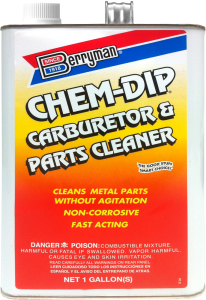1 Answers
Useful life will vary according to frequency of use, volume and make up of parts to be cleaned, how dirty the parts are, and the type of build-up of deposit to be removed. Any advance removal of oil, grease, loose dirt and road grime enhances life span. Generally, oily parts tax the solvent cleaner the most, and heavily encrusted, carboned parts take the longest to clean.There is no exact way to determine the useful life, but experience has demonstrated that in normal automotive tune-up shop environments, the product can last for 2 years or more if kept tightly sealed between uses.
Considering a lot of transmission work where the components come with a fairly oily residue, the time would likely be shorter. For frequent light cleaning of carburetors, throttle bodies and pre-cleaned engine components, one could expect up to two years. Highly varnished, gummed and carboned parts that require longer times in the cleaner could bring the life down to closer to a year or less. The #0901 replenisher in the one gallon can can boost the cleaning time when used to replenish a like amount of spent or evaporated cleaner.
 TIP: Many users save spent material to use as a pre-soak to remove loose dirt and road grime before putting parts into the new cleaner.
TIP: Many users save spent material to use as a pre-soak to remove loose dirt and road grime before putting parts into the new cleaner.
 TIP: Many users save spent material to use as a pre-soak to remove loose dirt and road grime before putting parts into the new cleaner.
TIP: Many users save spent material to use as a pre-soak to remove loose dirt and road grime before putting parts into the new cleaner.Please login or Register to submit your answer
